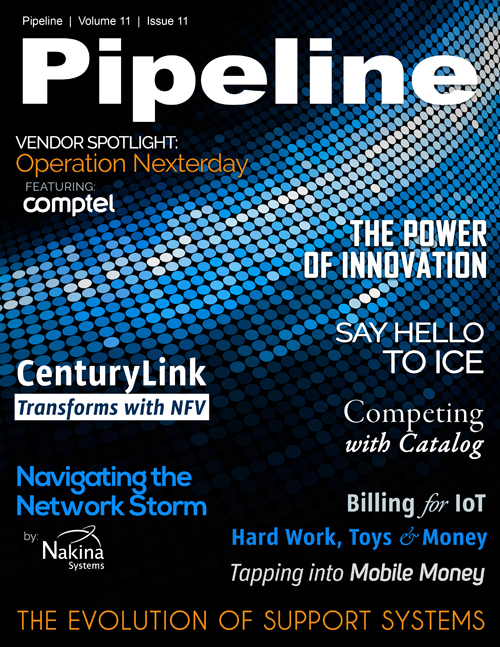Lessons from Comptel: Transforming with Operation Nexterday
2. Learn to operate at cloud speed
Digital and communications service providers must enrich their offerings and monetize more in less time. The time-to-market with new offerings must move at cloud speed, not 6-18-month cycles typical in telecom. Customers simply don’t wait around for innovation. In fact, with Uber, Tinder, Spotify and Snapchat at their fingertips, they don’t wait around for much of anything.
To support this, operators must build a digital marketplace. It’s not enough to have a basic web portal with a collection of buckets—consumers will quickly find a better, more personalized offering vs. spend time deciding which bucket they fit inside. To create a digital marketplace, digital and communications service providers must open their closed ecosystems, renew their tool-sets and become platform providers that can operate in new verticals like energy.
A great model for this evolution is Salesforce. What began as a cloud-based CRM tool turned into a platform that is now addressing a wide variety of business needs across distinct verticals, including communications. Its App Exchange ecosystem hosts more than 2,600 applications, and Dreamforce is now a massive show that pulls in 100,000 attendees. This is the power of the cloud and the platform play.Like Gartner, Comptel believes that, by 2017, the majority of digital and communications service providers will have made the decision to become platform providers, and will build new, agile tool-sets and technologies to enable that transformation.
3. Orchestrate everything
Complexity is mounting on both the supply and the demand side. It’s not enough to address one side or the other independently--someone needs to sit in between, reduce the friction and complexity, and keep the orchestration software as flexible, agile and technology- (and vendor-) agnostic as possible. That´s what Comptel does.
Traditional fulfillment platforms were never designed to support the business cases in which operators will engage in a post-digital age. As operators open their platforms, partner with numerous digital service and content providers, and constantly innovate with new bundles and service packages, they need highly flexible and adaptive service orchestration. It’s similar to a bakery that bakes bread and pastries in-house, and serves consumers and a few large restaurants undergoing a transition into a Walmart. Everything from product catalog to service activation needs to be re-worked to go from baker to big box retailer.
Managing customer expectations, which are now “anything-anytime-anywhere” thanks to pervasive mobility and the impact of Amazon, Google, Apple and others, is virtually impossible with legacy fulfillment. And we can’t forget that enterprise customers are also digital consumers, and bring those same expectations to work. In order to ensure a compelling and superior Quality of Experience (QoE), and get each offering right from the start, for all types of customers, digital and communications service providers must become supremely adept at accurate orchestration at cloud speed.
4. Embed real-time analytics everywhere
More valuable information flows through data networks each day than it did the day prior, and this fact is highly unlikely to change in the foreseeable future. As networks evolve, the rate of data growth will also increase. Digital and communications service providers must transform the naive flow of this voluminous data into Intelligent Fast Data. How? Embed real-time analytics in everything to extract value from the data that is transported at the point of decision-making. This capability must be baked into every layer to enable the creation of individualized experiences, to understand how customers use data and apps, and to fine-tune recommendation engines to capitalize on new opportunities in a meaningful and relevant way for each individual customer.
On a daily basis, Comptel collects and processes for a one single customer 10 times more data than what Twitter as a whole creates. Big Data is not really an issue of data or bigness—not even turning data into information or insights. It’s an issue of turning everything to Intelligent Fast Data and automated actions. The ability to capture and store large amounts of data has existed for some time. However, so often the data is leveraged in a reactionary, post-hoc manner. This is way too slow of an approach. Digital business with Generation Cloud needs to be done in-the-moment, not in the linearly progressing buying processes of today! Data is useless if it’s not actionable in the moment it matters most.
What good does it do to know that X number of customers searched for a specific piece of content or had a problem with a specific app once the point of decision-making has past? This simply doesn’t cut it because it doesn’t mirror the behaviors of the modern customer or capitalize on real-time moments as they happen. This is something that so many OTT players have realized, and yet, the businesses holding the pipes are still figuring it out. If they play their cards right, operators have a huge advantage here; combined with the platform play, Intelligent Fast Data can be packaged for any vertical.



















